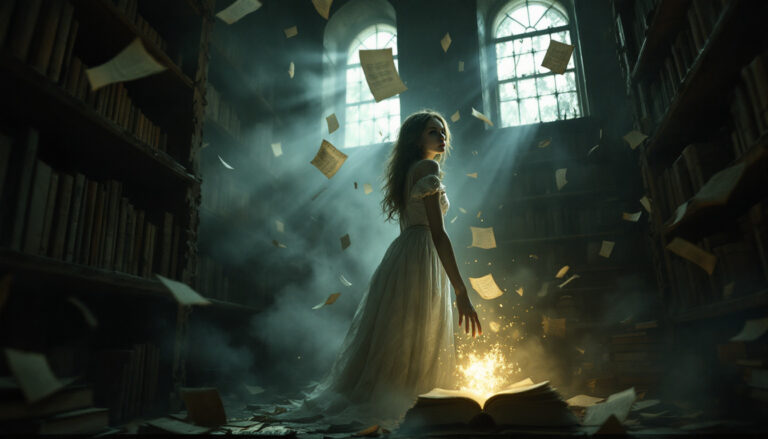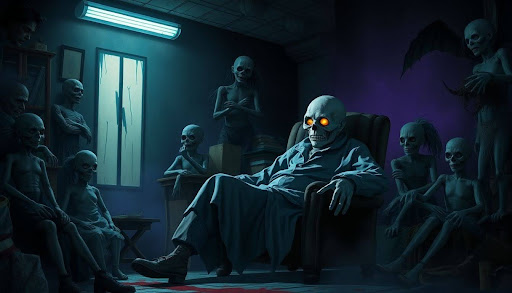Frankenstein by Mary Shelley – A Timeless Tale of Ambition and Humanity
Mary Shelley’s Frankenstein isn’t just a classic—it’s a cornerstone of Gothic literature and one of the earliest examples of science fiction. Written over 200 years ago, this tale of ambition gone wrong and the moral dilemmas of scientific discovery still strikes a chord today. By blending themes of human isolation, unchecked ambition, and societal prejudice, Shelley created a story that’s as haunting as it is thought-provoking. It’s not just about a monstrous creation but about the creator’s responsibility—and what it truly means to be human.
The Origins of Frankenstein
Mary Shelley’s Frankenstein is much more than a tale about a scientist and his towering creation. It’s a product of its time and a reflection of the author’s unique life experiences. The novel captures the fears and fascinations of the early 19th century, weaving science, philosophy, and emotion into a story that continues to resonate.
Mary Shelley’s Unique Perspective
Mary Shelley’s life was anything but ordinary. She was the daughter of feminist philosopher Mary Wollstonecraft and political thinker William Godwin, which meant she grew up amid lively debates about equality, human rights, and moral responsibility. When she wrote Frankenstein at just 18 years old, her worldview was already shaped by intellectual curiosity and personal loss—her mother had died shortly after her birth, and she suffered the deaths of her children. This constant confrontation with life and death is palpable in her novel.
The themes of creation and responsibility in Frankenstein can be directly linked to her experiences and the intellectual environment around her. At the now-famous ghost story contest in the summer of 1816, Shelley drew inspiration from recent scientific experiments with electricity and the idea of reanimating dead tissue, known as galvanism. Coupled with her fears of parenting and societal rejection, these elements shaped Victor Frankenstein’s creation of the creature and the subsequent tragedy.
Shelley understood rebellion—not just against societal expectations but on an existential level. Her narrative questions the boundaries of human pursuit and the consequences of playing god. Was Victor’s failure a cautionary tale for overambition? Or a critique of how society shuns those who are “different”? These questions make her work perpetually relevant. For further insights into Mary Shelley’s life and inspirations, check out this detailed biography.
The 1818 vs. 1831 Editions
Shelley revised Frankenstein several years after its first publication in 1818. The most notable differences in the 1831 edition reflect a shift in tone and focus. The original text is raw and portrays Victor Frankenstein as someone with free will and agency. In contrast, the 1831 version introduces elements of fate and predestination, presenting Victor as more of a pawn in a cosmic game.
Beyond thematic changes, the revised edition includes a new introduction where Shelley describes the novel’s origin during the famous ghost story challenge. It also features polished, more formal writing compared to the 1818 edition’s visceral, immediate prose. Some readers prefer the raw energy of the original, while others appreciate the philosophical depth of the updated version. For a breakdown of these differences, see this helpful comparison on Edward James’ teaching notes.
Both editions carry their own weight in literary history, but they raise fascinating questions about authorial intent. Did Shelley, influenced by the world around her, adapt her narrative to fit shifting ideas of responsibility and morality? Or was the evolution of the text a natural result of maturity and reflection? Whatever the case, these editions only enhance the depth of the story and Mary Shelley’s enduring legacy.
Themes and Symbolism in Frankenstein
Mary Shelley’s Frankenstein is more than a tale of a man’s ambition or a monster’s revenge. It’s a deep examination of ethical dilemmas, human emotion, and nature’s role in storytelling. Through its themes and symbolism, Shelley creates a narrative that is both thought-provoking and timeless.
The Ethics of Creation
Victor Frankenstein’s relentless pursuit to create life is a central conflict in the novel. His disregard for potential consequences raises enduring ethical questions. Was Victor playing God? Shelley explores the idea of scientific responsibility and the dangers of hubris. Victor’s obsession blinds him to the moral implications of his work, leading to catastrophic results for himself and those around him.
These ethical concerns are remarkably relevant today, in a world where fields like artificial intelligence and genetic engineering push boundaries. Victor’s failure to foresee the emotional and societal impact of his actions parallels modern debates on the responsibilities of scientists. To dig deeper into the ethical dilemmas raised in the novel, check out this article on Frankenstein’s moral and ethical questions.
Isolation and Loneliness
Isolation is a recurring theme for both Victor and his creation. Victor intentionally isolates himself from loved ones, prioritizing his experiments. This choice fosters his downfall and alienates him emotionally. Meanwhile, the creature craves connection but faces rejection at every turn due to his appearance. This rejection turns to rage, setting the stage for tragedy.
Shelley masterfully portrays how loneliness erodes people from the inside out. For Victor, it drains his empathy. For the creature, it sparks a need for revenge. Their shared loneliness highlights the destructive implications of being cut off from others. This theme calls readers to reflect: How does isolation impact our actions and relationships?
Nature as a Reflection of Emotion
As a product of the Romantic period, Frankenstein uses nature as a mirror for the characters’ inner turmoil. Storms and dramatic landscapes often serve as backdrops for significant events, reinforcing the emotions at play. For instance, the tempestuous weather in the novel symbolizes Victor’s chaotic mind or the creature’s despair.
Shelley’s descriptions of the Swiss Alps and Arctic landscape emphasize the sublime—a core aspect of Romanticism. These settings aren’t just visually striking; they connect the vastness of nature to the smallness and fragility of humanity. If you’re curious about how nature plays an integral role in Frankenstein, explore this resource on nature’s symbolic use in the novel.
Through profound ethical questions, themes of isolation, and nature’s vivid symbolism, Frankenstein continues to resonate with readers more than 200 years after its publication. Shelley’s ability to intertwine these complexities makes this tale endlessly compelling.
The Monster: A Tragic Figure
Mary Shelley’s creature in Frankenstein is far more than the lumbering, brainless beast that popular culture often portrays. He’s an intricate, tragic figure whose plight mirrors fundamental human struggles. By exploring his journey, we see a reflection of ourselves, highlighting themes of belonging, rejection, and identity.
A Reflection of Humanity
At its core, the monster is a raw representation of human emotions—unfiltered and pure. His journey for connection and meaning mirrors what many of us face in different forms. From his initial joy at discovering the wonders of nature to his deep anguish when faced with rejection, the creature experiences the highs and lows of life in ways that are all too familiar to us.
The creature longs for companionship, love, and understanding, just as any human does. His emotions, from joy to despair, are painfully authentic. When he reads literature like Paradise Lost, he begins to grapple with his place in the world, comparing himself to Adam yet feeling more akin to Satan. Haven’t we all, at some point, felt out of place or burdened by circumstances beyond our control?
Interestingly, the creature often displays a level of empathy and emotional depth greater than that of his creator, Victor Frankenstein. His desire for connection and identity becomes the driving force behind his actions—some of which are tragic and violent outbursts born from deep pain. If you’d like to read more on how the creature exemplifies human emotions, check out this Medium article on the complexities of belonging.
Society’s Role in Shaping the Monster
The monster’s descent into tragedy isn’t solely a product of his nature—it’s a direct result of societal rejection. From the moment of his creation, he’s met with horror and disgust, despite his initial innocence and vulnerability. This rejection shapes his worldview, turning him from a hopeful being into one consumed by bitterness and anger.
Each encounter with humanity reinforces this rejection. When he approaches a family he admires from afar, hoping for acceptance, they respond with fear and violence. Who wouldn’t feel despair in his place? These repeated experiences teach him that others will judge him solely on his appearance, stripping him of the chance to prove his goodness.
Victor, as the monster’s creator, bears significant responsibility for this tragedy. By refusing to take accountability and abandoning his own creation, Victor leaves the creature to fend for himself in a world unprepared to accept him. This lack of guidance and care mirrors the struggles of individuals who feel neglected or excluded in their own lives. For further insight into how societal rejection contributes to the monster’s transformation, see this analysis on Frankenstein’s theme of rejection.
Shelley’s story is a poignant reminder: society often defines “monsters” by their outer appearance rather than their inner worth. The creature’s tragic journey holds up a mirror to our own world, challenging us to reconsider how we treat those who are different. In his pain and transformation, we find both a cautionary tale and a call for compassion.
Frankenstein’s Legacy in Literature and Culture
Mary Shelley’s Frankenstein is not just a book—it’s a phenomenon that has shaped literature, movies, and even cultural conversations for over two centuries. The story of Victor Frankenstein and his tragic creation transcends its era, becoming a timeless exploration of ambition, ethics, and humanity. Below, we’ll dive deeper into how the themes of the novel remain strikingly relevant and examine how modern adaptations have reinterpreted Shelley’s masterpiece.
Enduring Relevance of the Themes
The ethical dilemmas that Frankenstein presents continue to resonate deeply in today’s world, particularly as we push the limits of technology and science. Victor Frankenstein’s obsession with creating life raises questions about the responsibilities of creators and the moral boundaries of innovation. Does the capability to do something mean we should do it? This question feels eerily familiar in an age of artificial intelligence, genetic engineering, and cloning.
For instance, Victor’s failure to anticipate the consequences of his actions mirrors the modern debates surrounding breakthroughs like gene editing using CRISPR. Just as Frankenstein neglected to consider the implications of creating sentient life, today’s scientists face scrutiny about the potential impacts of their discoveries. Ethical frameworks are being debated in the same way Shelley’s text forces readers to evaluate Victor’s hubris. Learn more about how Frankenstein remains a guidepost for ethical discussions.
Beyond scientific debates, the story’s exploration of isolation and societal rejection hits close to home in discussions around mental health and social dynamics. The creature’s ostracization for his appearance reflects how society often marginalizes those who don’t fit into conventional norms. It’s a brutal reminder of how humanity’s judgments can create “monsters” where none exist.
Modern Adaptations and Interpretations
Shelley’s Frankenstein has been adapted in countless ways, from stage productions to modern-day horror thrillers. Each adaptation offers a fresh lens on the source material, emphasizing different aspects of the story. The classic 1931 Universal Pictures film starring Boris Karloff, for instance, became iconic for its portrayal of the monster, though it diverged significantly from Shelley’s original vision. The creature was stripped of much of his intelligence and empathy, transforming him into a more straightforward villain.
In contrast, modern adaptations often rehumanize the creature, exploring his inner complexities. Films like Mary Shelley’s Frankenstein (1994) aim to stay truer to the text, highlighting the raw emotional trauma and intellectual depth of the monster. Meanwhile, shows like Penny Dreadful reinterpret the character in fascinating ways, merging Shelley’s themes with new narratives. Check out some of the best Frankenstein movie adaptations and how they compare to the book.
What’s particularly intriguing is how Frankenstein continues to inspire not just direct recreations but also thematic riffs. Movies like Ex Machina and Blade Runner dive into the ethics of creating conscious beings and the moral responsibilities that come with it—questions straight out of Shelley’s playbook. This underscores the adaptability of Frankenstein, as its core ideas remain new and vital even in wildly different genres. Explore why Frankenstein adaptations are so popular and what they reveal about our modern psyche.
Through all these interpretations, the essence of Shelley’s story—the struggle of creators, the anguish of rejection, and the pursuit of meaning—remains central. That’s what makes Frankenstein a literary chameleon, capable of evolving while staying endlessly relevant.
Conclusion
Mary Shelley’s Frankenstein is a thought-provoking masterpiece that continues to inspire and challenge readers. Its portrayal of isolation, morality, and scientific ambition holds a mirror to society’s ongoing struggles. Through Victor and the monster, Shelley raises questions about responsibility and the consequences of our actions—questions that remain deeply relevant.
This is more than just a Gothic tale; it’s a journey into the complexities of human emotion and ethics. If you haven’t read it yet, Frankenstein deserves a spot on any reader’s list. What lessons do you think Victor’s story offers in today’s world? Share your thoughts—let’s keep the conversation alive!







